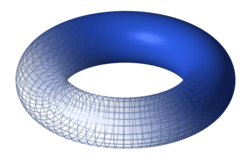Nuclear Fusion. A goal that has been with us for decades, but always elusive. If it happens, it will change everything. If it doesn't, at least we learned what a torus looks like.
Mechanical, aerospace and biomedical engineering professors David Irick, Madhu Madhukar and Masood Parang are engaged in a project involving the United States, five other nations, and the European Union, known as ITER. UT researchers completed a critical step this week for the project by successfully testing their technology this week that will insulate and stabilize the central solenoid—the reactor's backbone.
ITER is building a fusion reactor that aims to produce 10 times the amount of energy that it uses. The facility is now under construction near Cadarache, France, and will begin operations in 2020.
"The goal of ITER is to help bring fusion power to the commercial market," Madhukar said. "Fusion power is safer and more efficient than nuclear fission power. There is no danger of runaway reactions like what happened in nuclear fission reactions in Japan and Chernobyl, and there is little radioactive waste." Unlike today's nuclear fission reactors, fusion uses a similar process as that which powers the sun.
Since 2008, UT engineering professors and about 15 students have worked inside UT's Magnet Development Laboratory (MDL) located off of Pellissippi Parkway to develop technology that serves to insulate and provide structural integrity to the more than 1,000 ton central solenoid.
A tokamak reactor uses magnetic fields to confine the plasma — a hot, electrically charged gas that serves as the reactor fuel—into the shape of a torus. The central solenoid, which consists of six giant coils stacked on top of one another, plays the starring role by both igniting and steering the plasma current.
 Image shows a torus
Image shows a torus
The key to unlocking the technology was finding the right material—a glass fiber and epoxy chemical mixture that is liquid at high temperatures and turns hard when cured—and the right process of inserting this material into all of the necessary spaces inside the central solenoid. The special mixture provides electrical insulation and strength to the heavy structure. The impregnation process moves the material at the right pace, factoring in temperature, pressure, vacuum and the material's flow rate.
This week, the UT team tested the technology inside its mockup of the central solenoid conductor.
"During the epoxy impregnation, we were in a race against time," said Madhukar. "With the epoxy, we have these competing parameters. The higher the temperature, the lower the viscosity; but at the same time, the higher the temperature, the shorter the working life of the epoxy."
It took two years to develop the technology, more than two days to impregnate the central solenoid mockup and multiple pairs of watchful eyes to ensure everything went according to plan.
It did.
This summer, the team's technology will be transferred to US ITER industry partner General Atomics in San Diego, which will build the central solenoid and ship it to France.
ITER—designed to demonstrate the scientific and technological feasibility of fusion power—will be the world's largest tokamak. As an ITER member, the US receives full access to all ITER-developed technology and scientific data, but bears less than 10 percent of the construction cost, which is shared among partner nations. US ITER is a Department of Energy Office of Science project managed by Oak Ridge National Laboratory.
Source: University of Tennessee at Knoxville

The aim of art is to represent not the outward appearance of things, but their inward significance. – Aristotle
















